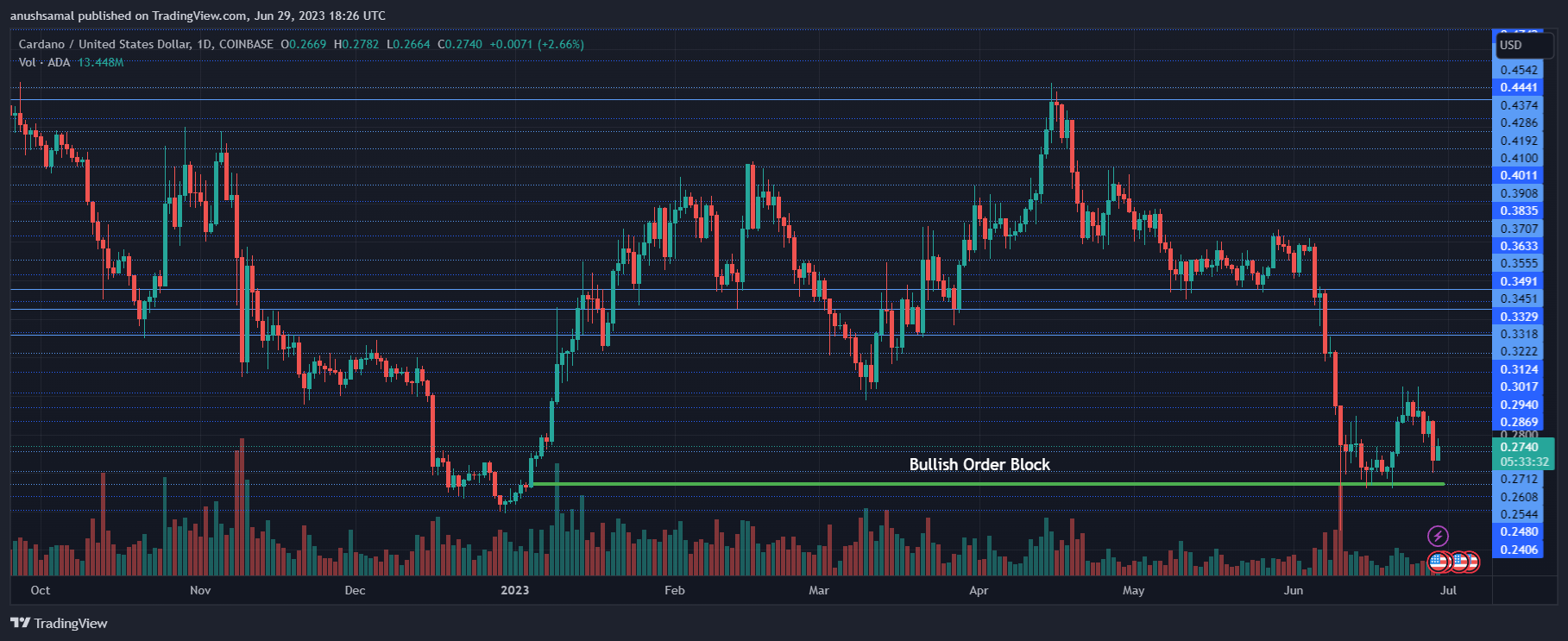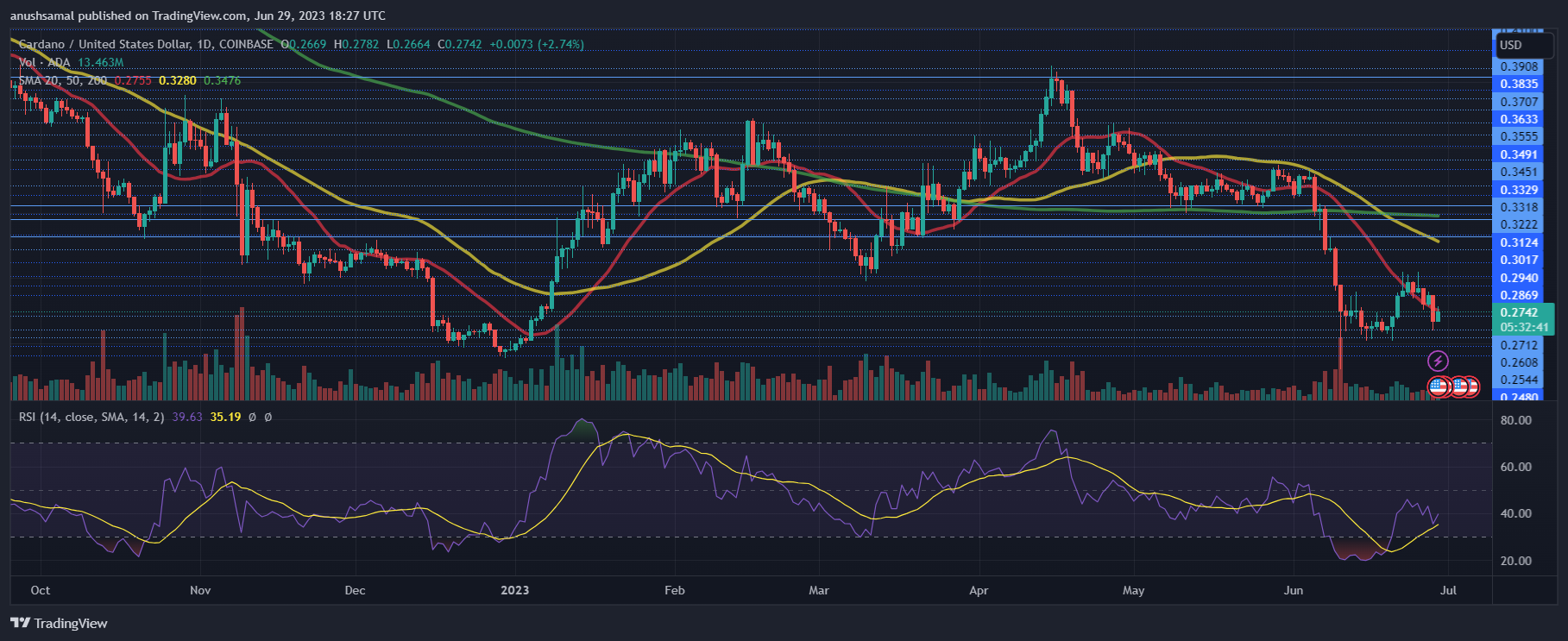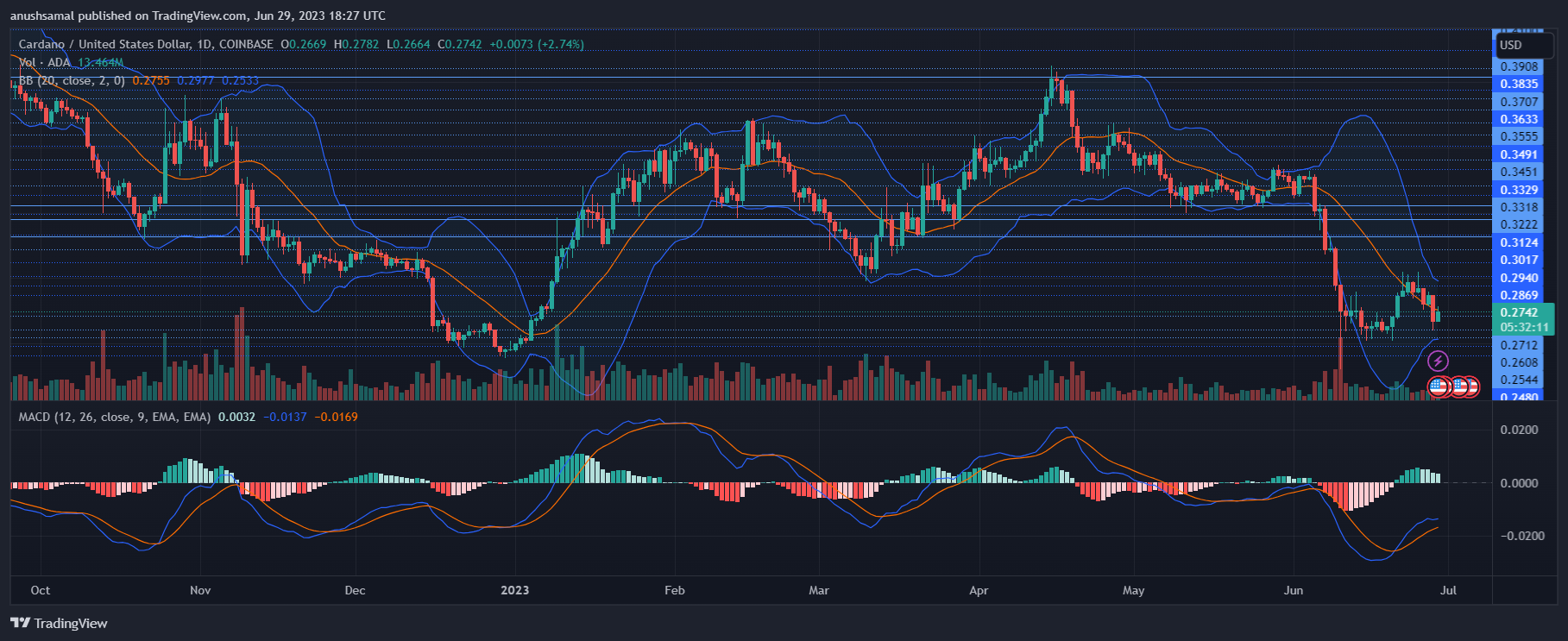Uncategorized
New Minting Services
Published
2 years agoon
By
adminThe truth will always set you free https://beta.cent.co/Blocknewsmedia/ #mintbnm
You may like
Section 1: Understanding Blockchain Technology
1.1 What is Blockchain?
Blockchain is a distributed ledger technology that allows data to be stored and shared across a network of computers in a secure and tamper-resistant manner. Each block in the chain contains a list of transactions, and once a block is added, it cannot be altered retroactively without consensus from the majority of the network. This immutability and decentralization make blockchain an innovative solution for various industries.
Blockchain achieves decentralization by removing the need for a central authority to validate transactions. Instead, it relies on a consensus mechanism, such as Proof-of-Work (PoW) or Proof-of-Stake (PoS), where network participants, known as nodes, validate and add new blocks to the chain. This eliminates the single point of failure and reduces the risk of fraud and manipulation.
1.2 Advantages and Challenges of Blockchain
Advantages:
- Transparency: All transactions on the blockchain are visible to every participant, ensuring transparency and accountability.
- Security: The cryptographic nature of blockchain makes it highly secure, as altering any data on a block would require an infeasible amount of computational power.
- Reduced Intermediaries: Blockchain eliminates the need for intermediaries, streamlining processes and reducing costs in various industries, such as finance and supply chain management.
Challenges:
- Scalability: Traditional blockchains like Bitcoin and Ethereum face scalability challenges due to their limited transaction throughput. However, ongoing research and innovations are addressing this issue.
- Regulation: The decentralized nature of blockchain poses challenges for regulators in terms of jurisdiction and compliance enforcement.
- Energy Consumption: Some consensus mechanisms, like PoW, require significant energy consumption, leading to concerns about the environmental impact.
Section 2: Government Updates on Digital Currencies
2.1 Government’s Perspective on Cryptocurrencies
Governments worldwide have varied stances on cryptocurrencies. Some view them as a disruptive force with the potential to revolutionize finance and improve financial inclusion. Others express concerns about their use in illegal activities, market volatility, and investor protection.
Countries like Japan, Switzerland, and the United States have taken a progressive approach, introducing regulations to provide clarity and foster innovation. In contrast, some nations have outright bans or restrictions on cryptocurrency usage.
2.2 IRS Reporting and Cryptocurrencies
In the United States, the Internal Revenue Service (IRS) treats cryptocurrencies as property for tax purposes. This means that cryptocurrency transactions are subject to capital gains tax. The following are some important points to consider regarding IRS reporting and cryptocurrencies:
- Cryptocurrency as Income: If you receive cryptocurrency as payment for goods or services, it is considered income and must be reported on your tax return.
- Cryptocurrency as Investment: If you buy cryptocurrencies and later sell or exchange them for fiat currency or other assets, any gains or losses need to be reported on your tax return.
- Crypto-to-Crypto Transactions: Crypto-to-crypto trades are taxable events, and you need to calculate and report the capital gains or losses for each trade.
- Forks and Airdrops: Cryptocurrency received through forks or airdrops is also taxable income, and the fair market value of the newly acquired coins must be reported.
To ensure compliance with IRS regulations, it is essential to keep accurate records of all cryptocurrency transactions and consult a tax professional if needed.
Section 3: Bitcoin: The First Cryptocurrency
3.1 Introduction to Bitcoin
Bitcoin, created by an anonymous person or group using the pseudonym Satoshi Nakamoto, was introduced in a whitepaper in 2008 and became the first decentralized cryptocurrency. It operates on the PoW consensus mechanism and has a capped supply of 21 million coins, making it a deflationary asset.
Bitcoin’s unique features, such as censorship resistance and immutability, have made it a store of value and a potential hedge against traditional financial systems’ uncertainties.
3.2 Bitcoin Security and Wallets
Bitcoin’s security lies in its decentralized network and consensus mechanism. The PoW requires miners to solve complex mathematical puzzles to add new blocks to the blockchain. This process secures the network and prevents double-spending.
To store Bitcoin securely, users can choose from various types of wallets. Hardware wallets, like Ledger and Trezor, offer offline storage and enhanced security. Software wallets, such as Electrum and Mycelium, are suitable for everyday use. Mobile wallets, like Coinbase and Trust Wallet, provide convenience for mobile transactions. Paper wallets involve printing the private key and address on a piece of paper, making it immune to online attacks.
Users must follow best practices like using strong passwords, enabling two-factor authentication, and keeping backups of their wallets’ private keys to safeguard their Bitcoin holdings.
Section 4: Ethereum: Beyond Digital Currency
4.1 Ethereum and Smart Contracts
Ethereum, proposed by Vitalik Buterin in late 2013, is a decentralized platform that extends the capabilities of blockchain beyond digital currency. At its core, Ethereum enables the execution of smart contracts, which are self-executing agreements with the terms directly written into code.
These smart contracts have opened up possibilities for decentralized applications (DApps) across various industries, including finance, supply chain, gaming, and more. They eliminate the need for intermediaries and can automate complex processes, reducing costs and enhancing efficiency.
4.2 Ethereum 2.0 and Proof-of-Stake
As Ethereum gains popularity, its limitations become evident, particularly in terms of scalability and energy consumption. Ethereum 2.0, a major upgrade, aims to address these challenges by transitioning from PoW to PoS consensus.
PoS eliminates the energy-intensive mining process and instead relies on validators who are chosen to create new blocks based on the number of coins they “stake” as collateral. This transition is expected to significantly increase Ethereum’s transaction throughput and reduce its environmental impact.
Section 5: Ripple and Stellar: Facilitating Cross-Border Payments
5.1 Ripple (XRP) Explained
Ripple is a blockchain-based payment protocol designed to facilitate fast, low-cost cross-border transactions. Unlike traditional blockchain networks that rely on PoW or PoS, Ripple employs a unique consensus algorithm known as the XRP Ledger Consensus Protocol. This ensures that transactions are settled quickly and efficiently.
Ripple’s native cryptocurrency, XRP, plays a crucial role as a bridge currency, enabling transactions between different fiat currencies. Its fast settlement times and low transaction fees have attracted interest from financial institutions looking to streamline their cross-border payment processes.
Ripple’s partnerships with major banks and financial institutions worldwide have solidified its position as a leading player in the remittance and payment space.
5.2 Stellar (XLM) in the Cryptocurrency Space
Stellar is another blockchain platform dedicated to facilitating cross-border payments and financial inclusion, especially in underserved regions. It was created by Jed McCaleb, one of the co-founders of Ripple, and launched in 2014.
Stellar uses the Federated Byzantine Agreement (FBA) consensus algorithm, which allows for quick and reliable transaction settlement. Its native cryptocurrency, Lumens (XLM), serves as a bridge currency, connecting different currencies and facilitating liquidity.
Stellar Development Foundation, a non-profit organization, oversees the development and promotion of the Stellar network. Its partnerships with NGOs and financial institutions have led to innovative solutions for remittances and micropayments in emerging economies.
Section 6: Hedera Hashgraph: A Next-Generation Distributed Ledger
6.1 Introduction to Hedera Hashgraph
Hedera Hashgraph is a public distributed ledger technology that claims to offer high throughput, low latency, and fairness in consensus. Unlike traditional blockchain networks, Hashgraph uses a directed acyclic graph (DAG) to achieve consensus.
The Hashgraph consensus algorithm ensures fairness and ensures that each node’s influence in the network is proportional to its contribution. This unique approach addresses some of the scalability and security concerns faced by traditional blockchains.
6.2 Governance and Security of Hedera Hashgraph
Hedera Hashgraph employs a governing council composed of leading organizations from various industries. These council members collectively make decisions on network upgrades, fees, and other important aspects, ensuring decentralized governance.
To ensure security, Hedera Hashgraph utilizes robust cryptographic mechanisms to protect against attacks. Its Byzantine fault-tolerant consensus algorithm provides resistance to malicious behaviors while maintaining network integrity.
Hedera’s focus on enterprise solutions and its partnerships with major companies position it as a promising contender in the rapidly evolving blockchain landscape.
Section 7: Top 100 Cryptocurrencies by Market Cap
7.1 Overview of the Top Cryptocurrencies
In addition to Bitcoin, Ethereum, Ripple, and Stellar, the cryptocurrency market includes numerous other projects with unique features and use cases. This section will provide brief introductions to some of the top cryptocurrencies by market capitalization, such as Litecoin, Cardano, Polkadot, Binance Coin, and many more.
Each cryptocurrency has its own dedicated community, development team, and goals. Understanding the differences between these projects will help investors and enthusiasts make informed decisions and recognize potential opportunities in the ever-expanding crypto market.
Conclusion
Blockchain technologies, digital currencies, and cryptocurrencies have rapidly evolved since the inception of Bitcoin. Governments worldwide have been monitoring and responding to this digital revolution, introducing regulations to balance innovation with investor protection. As the blockchain ecosystem continues to mature, it is essential to stay updated with the latest developments and navigate the complexities of cryptocurrencies responsibly.
Learning about the foundational principles of blockchain, the functionalities of different cryptocurrencies, and the regulatory landscape will empower individuals and businesses to harness the true potential of this transformative technology.
Stay tuned for the next section, where we will dive deeper into the different types of cryptocurrencies and their unique features.

Uncategorized
12 things blockchain protocols should consider when exploring AI
Published
9 months agoon
July 18, 2023By
admin

Across industries, it seems all anyone is talking about is artificial intelligence. Even companies that aren’t tech-forward are scrambling to discover how AI works and what it could do for them. Given the impact AI is predicted to make, it’s hardly surprising that blockchain protocols — part of an industry that is decidedly tech-forward — are exploring what role(s) AI could play for them.
From data analysis to improving scalability to fostering interoperability, AI could prove to be a powerful tool in the arsenal of blockchain protocols. Still, it’s essential to carefully review not only all the potential benefits, but also the possible complications. Below, 12 members of Cointelegraph Innovation Circle discuss some of the things blockchain protocols should consider as they begin exploring AI.
The preservation of data privacy and security
Since AI relies on vast amounts of data for training and decision making, protocols must prioritize robust encryption, anonymization techniques and secure data handling practices. Additionally, implementing privacy-enhancing technologies like federated learning or differential privacy can mitigate the risk of sensitive information being exposed. – RJ Phillips, Zoop
The team behind an AI product
Carefully consider the team behind each product. While many AI builders promise huge results, you should always make sure to research their historical performance to determine whether their projected outcomes are actually realistic. Overall, protocols should look for companies with a consistent track record of delivering quality products on schedule and within budget. – Wolfgang Rückerl, ENT Technologies AG
Maintaining and/or enhancing decentralization
Protocols should prioritize the design of AI solutions that maintain or enhance decentralization, possibly through the use of distributed AI models or decentralized decision-making algorithms. Furthermore, protocols should consider the potential risks linked to AI, such as bias and security vulnerabilities. – Tammy Paola, Zerocap
The ethical use of AI
Ethical frameworks and guidelines should be implemented to address problems with bias, fairness and responsible data use. The user experience of protocols should also be smooth and straightforward so that AI-enabled blockchain solutions are easy to use and understand. Protocols can produce technically solid, ethically sound and user-centric solutions. – Myrtle Anne Ramos, Block Tides
Balancing privacy and power
Dance with the two titans! As you usher AI into the blockchain realm, remember it’s a dance between privacy and power. AI craves data, but blockchain champions privacy. Striking the right balance is key: Leverage AI’s might without compromising the sanctity of blockchain’s privacy. It’s a delicate dance, but when done right, it can transform the blockchain ballet! – Erki Koldits, OÜ Popspot
Whether you can offer a real value-add
A lot of the so-called “AI tokens” right now are just trading on hype — riding the marketing wave. But once the market realizes that, it will just dump those protocols. Never try to market your protocol as something it’s not. If you can’t provide a real AI value-add, but are just copying some code from ChatGPT or other sources, don’t do it. – Zain Jaffer, Zain Ventures
Join the community where you can transform the future. Cointelegraph Innovation Circle brings blockchain technology leaders together to connect, collaborate and publish. Apply today
How (or if) AI contributes to your mission and vision
AI can easily be a game changer for many tech companies and protocols. The key to success is to make sure that your AI angle, initiative or element contributes to your original mission and vision. If it helps you enhance it or reach it earlier, it is clearly a potential strategic pillar of your roadmap. If not, leave it entirely out, and don’t get distracted! – German Ramirez, THE RELEVANCE HOUSE AG
AI’s mutability
By design, AI is not fixed. It can give two different answers to the same input at two different times, depending on its experience. A blockchain protocol’s role is to be verifiably time-consistent. There is a fundamental tension; incorporating AI could break the value of a blockchain protocol. Using AI to learn how to write new smart contracts is a different story — if it doesn’t touch the protocol. – Stephanie So, Geeq
The increased need for pen testing
As the abilities of large language models expand, it will be ever more crucial to perform periodic (eventually perpetual) penetration tests. Additionally, there will need to be multiple, comprehensive code audits completed by reputable providers prior to a launch. – Timothy Enneking, Digital Capital Management
Projects being rushed to market
When a topic captures the popular imagination, companies will fast-track solutions to meet the growing demand. However, this can also lead to a dilution in overall services, as underdeveloped products hit the market with the sole aim of capitalizing on the craze. To protect participants, crypto leaders should vet all projects for competency and effectiveness before granting network access. – Oleksandr Lutskevych, CEX.IO
The variety of use cases
Protocols can unlock an exciting new set of use cases with AI. For example, DeFi and trading protocols could quickly identify arbitrage opportunities using AI. Governance protocols could predict voting outcomes or identify anomalies in transaction behavior. Data protocols could tag AI data and make AI output transparent, decentralized and censorship-resistant. The opportunities are endless. – Shiv Madan, Moonwalk
The fact that AI is not going away
Blockchain protocols should prepare for AI to become a permanent fixture rather than a short-term craze. Therefore, protocols must treat AI with the enormity it deserves. Companies should choose and implement AI solutions carefully to avoid embarrassing performance and scalability issues later. – Sheraz Ahmed, STORM Partners
This article was published through Cointelegraph Innovation Circle, a vetted organization of senior executives and experts in the blockchain technology industry who are building the future through the power of connections, collaboration and thought leadership. Opinions expressed do not necessarily reflect those of Cointelegraph.
Learn more about Cointelegraph Innovation Circle and see if you qualify to join.
Source link
ADA
Cardano Shows Signs of Recovery: When Will it Reach $0.30?
Published
10 months agoon
June 29, 2023By
adminCardano (ADA) has shown signs of recovery in recent trading sessions, although its price continues to linger near a significant resistance level. In the past 24 hours, ADA witnessed a modest 2% increase, but weekly gains have been erased, resulting in a 7% depreciation on the weekly chart.
The technical outlook has yet to present bullish signals, with both demand and accumulation remaining relatively low. Bitcoin dominance increased while trading within the $30,000 price range. Major altcoins also experienced minor gains in the past few days. Although Bitcoin displayed a bullish trend, its price fluctuated, and other altcoins followed similar patterns.
For the Cardano price to experience upward movement, Bitcoin must exhibit another surge from its current price level. If ADA manages to sustain above the current support line with the support of BTC, the altcoin may soon attempt to break through immediate price resistance. The decrease in ADA’s market capitalization indicates the continued influence of bearish sentiment in the market.
Cardano Price Analysis: One-Day Chart

At the time of writing, ADA was observed to be trading at $0.27, a significant resistance point for the altcoin. Previous price action has indicated that the bulls have faced rejection at this level in the past. Additionally, consolidation has been observed around this price mark.
If ADA continues its upward movement, it may attempt to trade near or even surpass the $0.30 level. However, in the case of extended consolidation, ADA could experience a dip towards its support line at $0.26.
Notably, the $0.26 level has acted as a bullish order block for the coin, indicating a price reversal and subsequent upward movement after reaching this level. This observation suggests the possibility of incoming bullishness for ADA.
Technical Analysis

Despite an increase in buying strength, the overall demand for ADA has remained low. This is evident from the Relative Strength Index (RSI) failing to move above the half-line, indicating that sellers have maintained a strong presence in the market.
However, there is an expectation for a potential resurgence in demand if the price manages to surpass the $0.27 zone. Similarly, the price falling below the 20-Simple Moving Average (SMA) line indicates that sellers have been driving the price momentum in the market.

ADA has exhibited buy signals that suggest a potential price reversal in the near future. The Moving Average Convergence Divergence (MACD) has formed green histograms, which are tied to buy signals for the coin. This indicates positive momentum for ADA and suggests a potential upward movement in price.
Additionally, the Bollinger Bands, which provide insights into price volatility and fluctuation, have constricted. This tightening of the bands indicates that the trading range has become tight. Therefore, there is a possibility of a price breakout.
Source link

Forbes Unveils 20 Crypto ‘Zombies,’ Declares Ripple And XRP Among The Undead

Crypto Trader Issues Bitcoin Warning, Says Ethereum Liquid Staking Project Flashing Short-Term Bullish Signal

Crypto Analyst Predicts Massive Move For Bitcoin, What’s The Target?

Analyst Warns One Crypto Asset Category About To Face a Reckoning, Maps Path Forward for Bitcoin and Hedera

DOGE Price Prediction – Dogecoin Below $0.14 Could Spark Larger Degree Drop

WhalesNight AfterParty 2024 – Blockchain News, Opinion, TV and Jobs

‘Violent to the Upside’: This Catalyst Could See Bitcoin Explode by up to 1,486%, Says Strike CEO Jack Mallers

85% Of Altcoins In “Opportunity Zone,” Santiment Reveals

Ethereum, Solana and Altcoins Approaching ‘Banana Zone,’ According to Macro Guru Raoul Pal – Here’s His Outlook

Bullish March Marks Record for Bitcoin – Blockchain News, Opinion, TV and Jobs

Why Is The Dogecoin Price Down Today?

The AI-Based Smart Contract Audit Firm “Bunzz Audit” Has Officially Launched – Blockchain News, Opinion, TV and Jobs
Successful Beta Service launch of SOMESING, ‘My Hand-Carry Studio Karaoke App’

dWallet Network brings multi-chain DeFi to Sui, featuring native Bitcoin and Ethereum – Blockchain News, Opinion, TV and Jobs

Gaming, Stablecoins and Product Innovation Take the Stage at Sui Basecamp, Inaugural Global Conference for the Sui Ecosystem

Bitcoin Dropped Below 2017 All-Time-High but Could Sellers be Getting Exhausted? – Blockchain News, Opinion, TV and Jobs

What does the Coinbase Premium Gap Tell us about Investor Activity? – Blockchain News, Opinion, TV and Jobs
BNM DAO Token Airdrop

NFT Sector Keeps Developing – Number of Unique Ethereum NFT Traders Surged 276% in 2022 – Blockchain News, Opinion, TV and Jobs
New Minting Services

Block News Media Live Stream
A String of 200 ‘Sleeping Bitcoins’ From 2010 Worth $4.27 Million Moved on Friday

SEC’s Chairman Gensler Takes Aggressive Stance on Tokens – Blockchain News, Opinion, TV and Jobs

Friends or Enemies? – Blockchain News, Opinion, TV and Jobs

Enjoy frictionless crypto purchases with Apple Pay and Google Pay | by Jim | @blockchain | Jun, 2022

Block News Media Live Stream

Block News Media Live Stream

How Web3 can prevent Hollywood strikes

XRP Explodes With 1,300% Surge In Trading Volume As crypto Exchanges Jump On Board

Block News Media Live Stream
Trending

 Altcoins2 years ago
Altcoins2 years agoBitcoin Dropped Below 2017 All-Time-High but Could Sellers be Getting Exhausted? – Blockchain News, Opinion, TV and Jobs

 Binance2 years ago
Binance2 years agoWhat does the Coinbase Premium Gap Tell us about Investor Activity? – Blockchain News, Opinion, TV and Jobs
- Uncategorized2 years ago
BNM DAO Token Airdrop

 BTC1 year ago
BTC1 year agoNFT Sector Keeps Developing – Number of Unique Ethereum NFT Traders Surged 276% in 2022 – Blockchain News, Opinion, TV and Jobs

 Video1 year ago
Video1 year agoBlock News Media Live Stream

 Bitcoin miners2 years ago
Bitcoin miners2 years agoA String of 200 ‘Sleeping Bitcoins’ From 2010 Worth $4.27 Million Moved on Friday

 Bitcoin1 year ago
Bitcoin1 year agoSEC’s Chairman Gensler Takes Aggressive Stance on Tokens – Blockchain News, Opinion, TV and Jobs

 Bitcoin miners2 years ago
Bitcoin miners2 years agoFriends or Enemies? – Blockchain News, Opinion, TV and Jobs

